How to Fix Error Code 0x80070424 Windows Update
Windows Update Error 0x80070424 occurs when the required system files are not properly registered. This error typically arises when trying to update the system using the Windows Update Standalone Installer or the Windows Update feature in Settings.
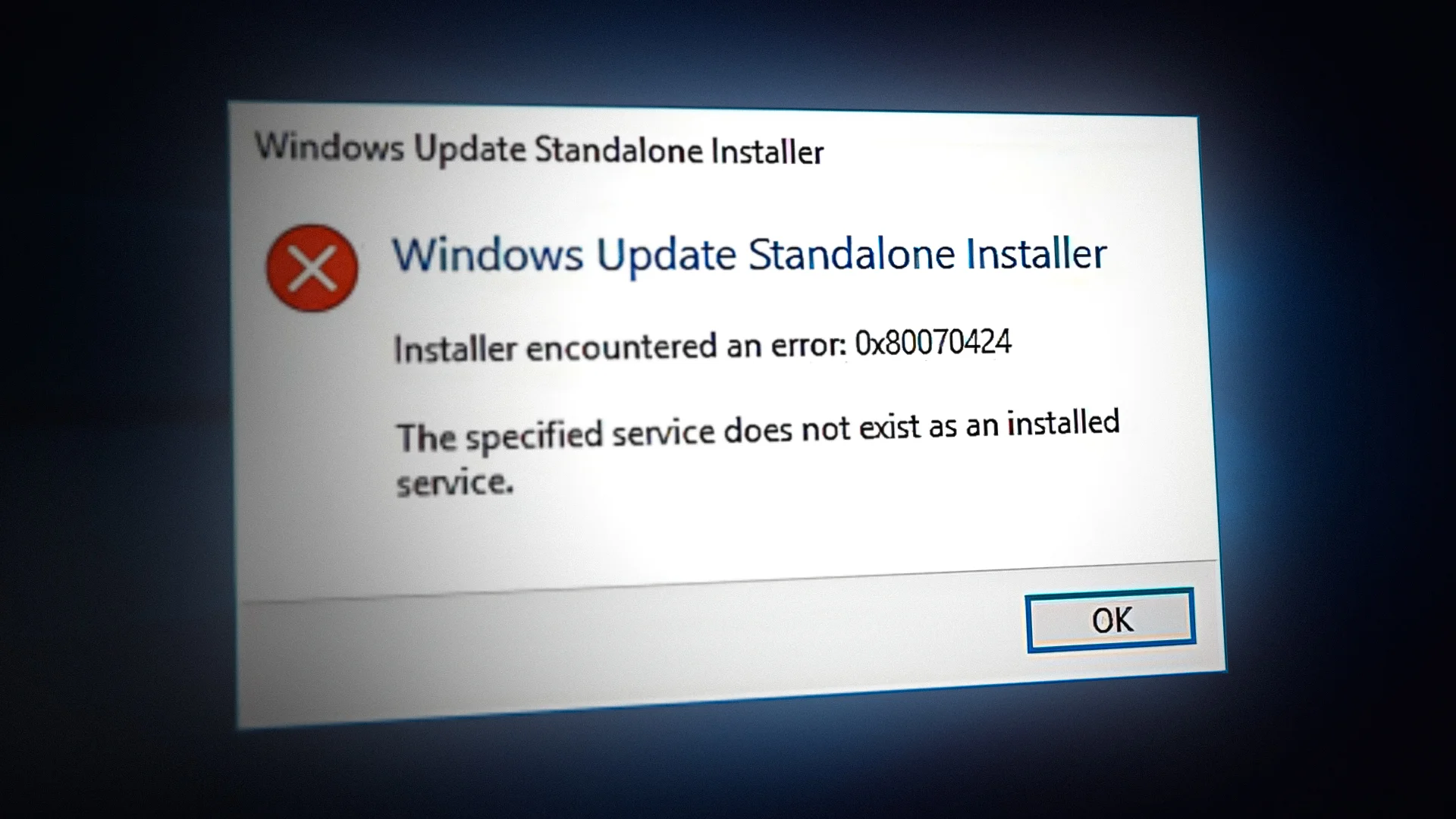
What causes the Windows Update Error 0x80070424?
According to Microsoft’s Official Error Lookup tool and the official Microsoft Support forum, Error code 0x80070424 indicates that ‘The specified service does not exist as an installed service’. This suggests a significant issue related to registry corruption, misconfigured Windows update services, and corrupted system files.
How to Fix Windows Update Error Code 0x80070424?
To resolve this error, it is necessary to fix the corrupted system and registry files that are primarily causing the issue. This will not only resolve the error but also ensure stable Windows updates going forward. Below, we provide multiple solutions for this issue, starting from simple methods and progressing to more advanced solutions. These solutions are designed to minimize changes made to your computer. Please follow the solutions below:
Solution 1: Windows Update Troubleshooter
Windows Update Troubleshooter can help repair corrupted or missing update services and fix system files necessary for smooth Windows updates. To run the Windows troubleshooter, follow the steps below:
- Press Winkey + I to open Settings.
- Go to Update & Security > Troubleshoot > Windows Update > then click ‘Run Troubleshooter’.
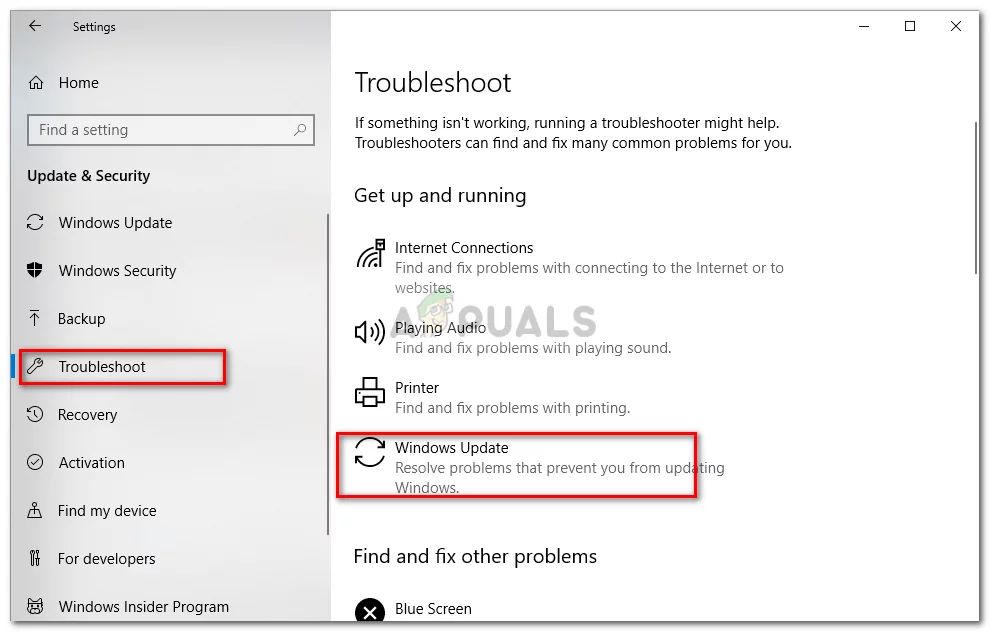
Windows Update Troubleshooter
Solution 2: Registering System Files
Windows updates rely on specific system files to download and install update packages securely. If these system files are not properly registered on the system, it can result in the error you are experiencing. To resolve this issue, you need to register these system files. Here’s how you can register the files:
- Press Winkey + R to open Run.
- Enter the following one by one:
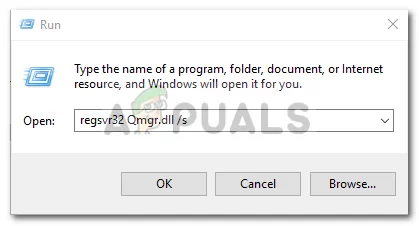
Registering Windows Update Components regsvr32 Qmgr.dll /s regsvr32 Qmgrprxy.dll /s
- Reboot your system and then run the update.
Solution 3: Enabling Windows Update Service
The error can often be caused when the Windows Update, Background Intelligent Transfer Service, and Workstation services are not running. In such cases, you will need to visit Windows Services and start them manually. Here’s how:
- Open Run by pressing Winkey + R.
- Type in ‘services.msc’.
- Locate the above-mentioned services and double-click them one by one.
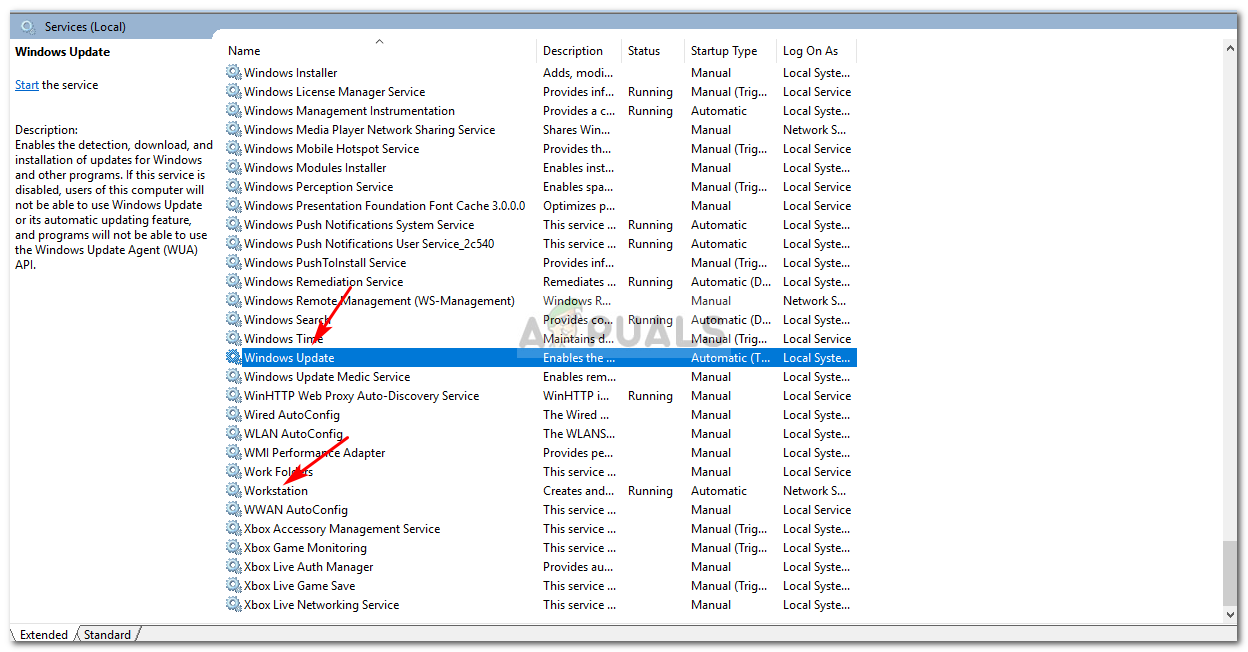
Windows Update Services - Make sure the services are set to Automatic and are running.
- If they aren’t, set the Startup type to Automatic, click Apply and make sure to Start the service.
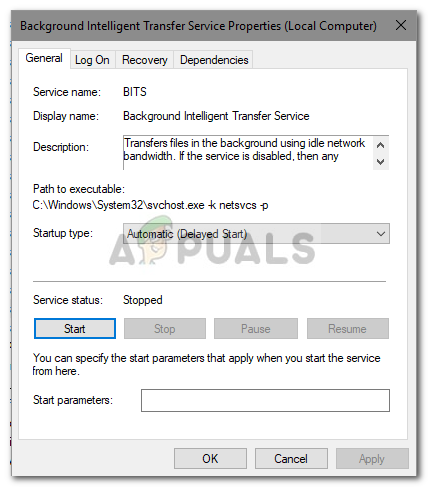
Starting Windows Update Services - Reboot your system and then try to update.
Solution 4: Using Windows Registry
The Windows Registry is a critical component of the Windows operating system. Sometimes, the error occurs due to restrictions imposed by the Windows Registry. You can resolve the error by enabling Windows Update through the registry. Here’s how:
- Press Winkey + R to open Run.
- Type in ‘regedit’.
- Paste in the following path in the address bar:
HKEY_LOCAL_MACHINE\SOFTWARE\Policies\Microsoft\Windows\WindowsUpdate
- In the right-hand pane, look for the DisableWindowsUpdateAccess DWORD.
- Double-click it and set the value to 0.
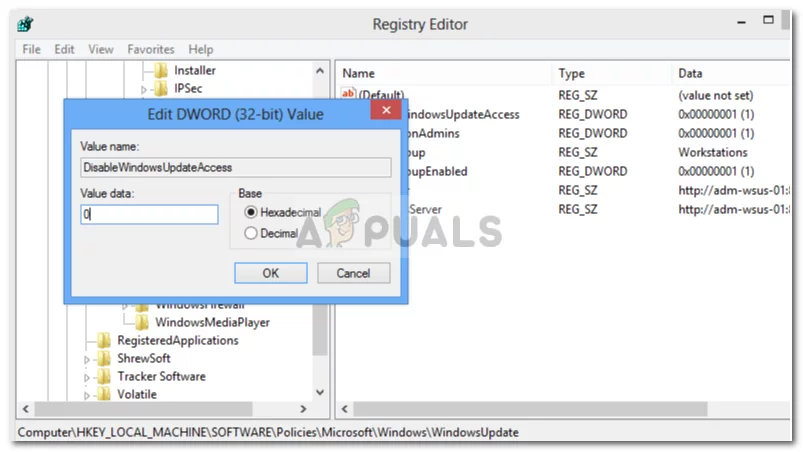
- Enabling Windows Update from Registry
- Restart your machine for it to take effect.
Solution 5: Reset Windows Update Components
When you initiate a Windows update, the update components are responsible for downloading, storing, and installing the update package. However, if these update components are not functioning properly, it can affect the update process. In such cases, you will need to reset the update components.
There are two methods to reset the Windows update components: using a series of commands in the command prompt or using a safe and easy-to-use script. To simplify the process for you, we will provide a link to the script. You can download it from here. Once downloaded, extract the contents of the .zip file and run the ResetWUEng.cmd file as an Administrator.
Solution 6: Repair Windows
If none of the above solutions resolve the issue, the final option remaining is to repair your Windows installation. When you perform a Windows repair, it will update your system to the latest version and also repair any damaged system files.
To learn more about this process, please refer to the article on our site that provides detailed instructions on how to repair your Windows 10 installation.










